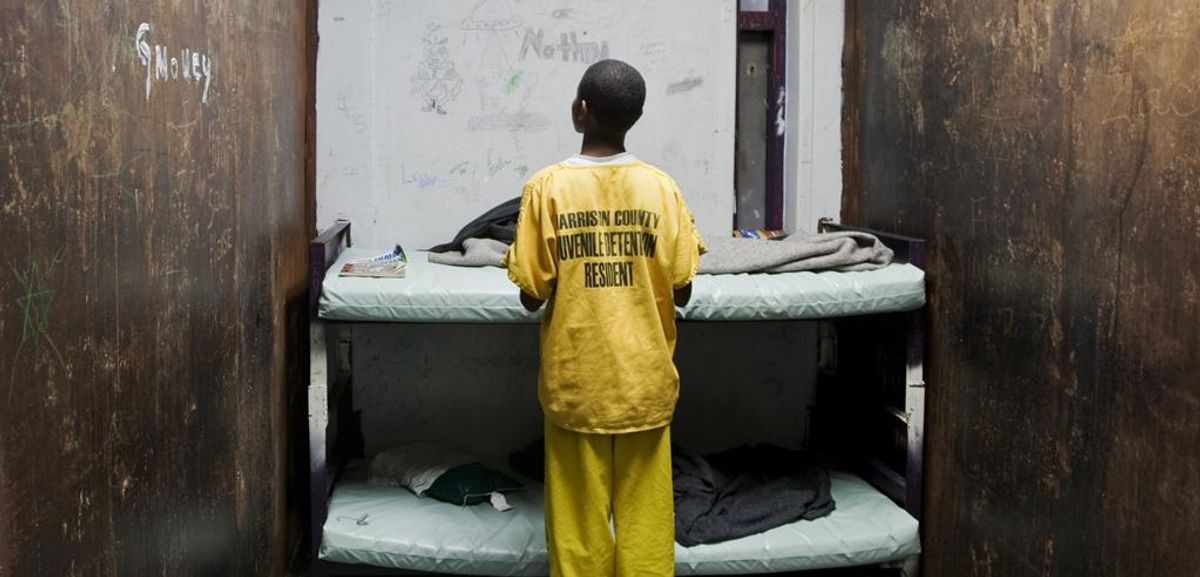The Art for Justice Fund, started earlier this year by the philanthropist and art collector Agnes Gund through the sale of a Roy Lichtenstein painting with the aim of improving the criminal justice system, has awarded its first round of grants. A total of $22m will go to 30 projects around the country, including groups that work to change government policy, such as bail and sentencing reform, and those that help current and former prisoners through education, employment and creative programmes. A particular focus of the fund is the treatment of people of colour, which Gund called “unfair and unjust” during a teleconference call with journalists on Wednesday. “The facts are clear: Black and Hispanic women, men, and children are far more likely to be arrested and incarcerated than white people,” she said.
The inequality Gund saw her African American grandchildren face prompted her to invest in social issues. “I believe that we are at a crossroads now, when we can drive meaningful, long-term change,” Gund said. She added that through research from the Ford Foundation, which is helping to manage the fund, “we had a chance to learn about organisations that are doing a good job already, that need further funding in order to get going with changing things. And I think that’s what we want is some change.”
Among the arts organisations to receive grants are the Los Angeles-based Arts for Incarcerated Youth Network, which runs arts programming for kids in the juvenile justice system; the Philadelphia Mural Arts Advocates, which provides art training and employment to prisoners released on probation; and The Actors’ Gang, a non-profit theatre company led by Tim Robbins that has organised acting programmes inside California’s prison system for the past 11 years.
The fund has also awarded grants to a number of social activists and legal groups that do the necessary policy work. “Bail reform is an issue that has recently come into the public view and has generating enormous advocacy on the local level,” said Tanya Coke, the senior programme officer for Gender Race and Ethnic Justice at the Ford Foundation, and those most affected are those who cannot afford to pay to be released from jail before their trials. The push in the 1980s and 90s for prosecutors to be tough on crime through harsher sentencing—a movement Attorney General Jeff Sessions has recently revived—has also meant that “people are staying in prison for far longer than they did 30 years ago,” Coke said.
Grantees working in this arena include the New York-based Katal Center for Health, Equity, and Justice, which seeks to end mass incarceration and co-founded the campaign to close Rikers Island prison; Color of Change, a nationwide online organisation that aims to mobilise and educate Black activists; and the Equal Justice Initiative in Montgomery, Alabama, which provides legal representation for prisoners with excessively long sentences in the South, and is suing to end to life without parole sentences for minors. The initiative is also behind The National Memorial for Peace and Justice, dedicated to the African American victims of lynching, and The Legacy Museum, which will explore the connections between slavery, lynching, segregation, and mass imprisonment in America, both opening next April.
On top of the $100m in seed money Gund gave to launch the fund this summer, around 30 other donors have contributed at least $100,000, with Walmart heiress and Crystal Bridges founder Alice Walton giving $5m. The fund will start reaching out to potential new donors next year, but its website already has a form so that anyone can give cash to help, or make a “major gift” of $500,000 or more through the sale of art, stocks or securities. And since the fund is being managed by the Ford Foundation, which will cover the operating expenses, in partnership with Rockefeller Philanthropic Advisors, it has said that “100 percent of contributed funds are allocated directly to grants and program-related contracts”.
The plan is to distribute the money over the next five years in three yearly instalments, in the spring, summer and fall. For this first round, proposals to receive a grant were made by invitation only, but the application process may open up in the future. And while grants have so far only been awarded to writers who report on and document injustices through the fund’s “Bearing Witness” fellowships, there are plans to fund artists and film-makers in the coming cycles. “Unique to this fund is that new art will be created out of it,” said Elizabeth Alexander, the director of creativity and free expression at the Ford Foundation. “Great works of art that the world has not yet seen.”


